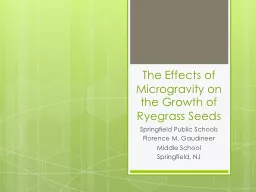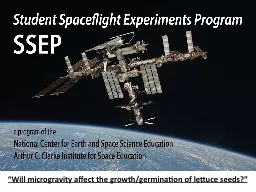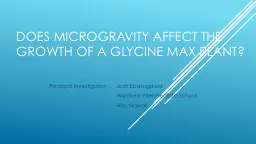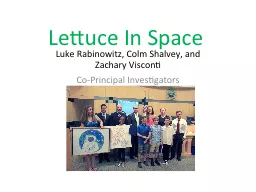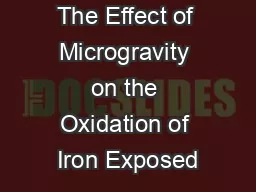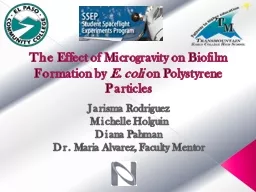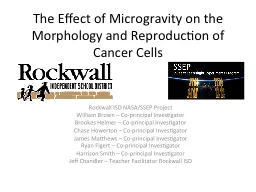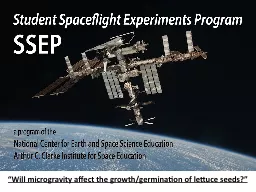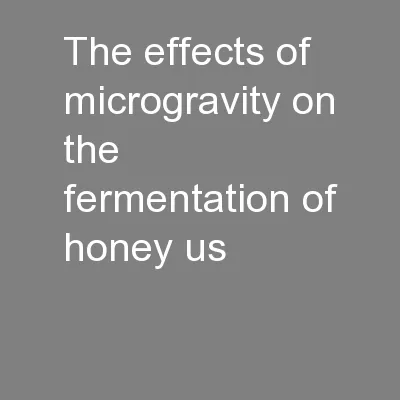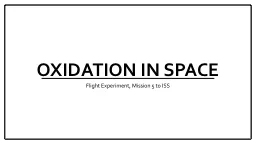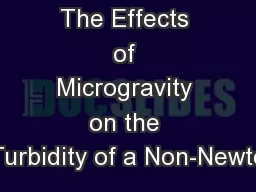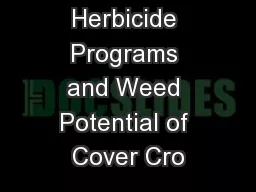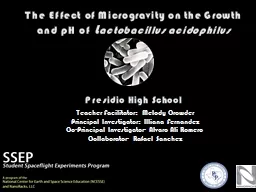PPT-The Effects of Microgravity on the Growth of Ryegrass Seeds
Author : alexa-scheidler | Published Date : 2018-03-10
Springfield Public Schools Florence M Gaudineer Middle School Springfield NJ 7 th Grade Team From FMG Co Principal Investigators David Ares Jeremy Dash Daniel
Presentation Embed Code
Download Presentation
Download Presentation The PPT/PDF document "The Effects of Microgravity on the Growt..." is the property of its rightful owner. Permission is granted to download and print the materials on this website for personal, non-commercial use only, and to display it on your personal computer provided you do not modify the materials and that you retain all copyright notices contained in the materials. By downloading content from our website, you accept the terms of this agreement.
The Effects of Microgravity on the Growth of Ryegrass Seeds: Transcript
Download Rules Of Document
"The Effects of Microgravity on the Growth of Ryegrass Seeds"The content belongs to its owner. You may download and print it for personal use, without modification, and keep all copyright notices. By downloading, you agree to these terms.
Related Documents

